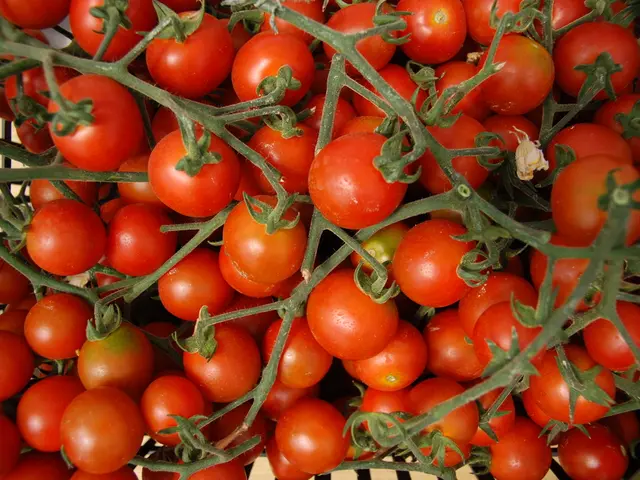Various Garden Maintenance Activities to Undertake in May
Spring's in the air, and it's time to get your hands dirty! May is the perfect month to step outside and give your garden a much-needed tune-up. Here's your guide to maintaining a successful summer garden. Let's dive right in!
Garden Maintenance Checklist
Watering Systems

First things first - inspect your watering systems. Winter can wreak havoc on pipes and components, so it's crucial to check each line before turning on the summer irrigation. Watch out for any nicks you might have inadvertently made while weeding or digging earlier in the year. Stand outside and test each zone to ensure your controller is working properly. If you use a hose bib setup, don't forget to check it too—the early hot weather on the west coast means that irrigation may start earlier this year.
Compost and Mulch

May is the perfect time to add some nutrients back into your garden. Lay down a layer of compost to act as a general fertilizer and restore volume to any beds that have eroded over the winter. Follow it up with a layer of mulch to maintain moisture, suppress weeds, and keep your garden looking tidy. As you spread the compost and mulch around, take note of any areas that need weeding or have caused concern.
Shrubs, Trees, and Vines
Many shrubs will be blooming this month, like lilacs and forsythia. Go ahead and prune them back after blooming to keep your garden looking neat and encourage a second bloom in some cases. This is also an excellent time to plant new woody shrubs and trees since the weather is mild and the ground is soft from the winter rains. Take care to only use clean pruners, and don't forget to disinfect them between plants to avoid the transmission of viruses, fungi, or diseases.
If you have climbing perennial vines like clematis, roses, or honeysuckle, now is the time to give them a little support as they start to wake up.
Flowers
Annual Flowers
Spring has finally arrived, and it's time to add some pops of color to your garden. Garden centers should be teeming with annuals like petunias, lobelia, marigolds, and begonias. Remember to wait until after the risk of frost has passed before planting these tender annuals. They make perfect additions to window boxes and planters, where they can add a burst of color during the transition between perennials.
Make sure your beds have a slow-release fertilizer like Osmacote and that they will get plenty of water.
Perennial Flowers
Now is a great time to enjoy the tulips blooming in your garden, but don't cut them down after they fade. Instead, leave the foliage to yellow and then divide or move the bulbs in the fall. If you didn't get your new perennials planted in April, May is still a perfect time to do so. Remember to use slow-release fertilizer when planting.
Take advantage of the "sad plant shelf" (SPS) at garden centers, grocery stores, and other retailers. Store-discounted plants can be excellent finds as perennials, even if they might not bloom this season. Delphiniums and agastache are definitely worth a second look.
Vegetables
May is the perfect month to get your vegetable garden off to a healthy start. Gardeners everywhere are eagerly awaiting the moment to put their tomatoes, peppers, and eggplants into the ground—so get ready for a local gardening group conversation!
Start hardening off your tomatoes, peppers, and eggplants, and wait for overnight temperatures above 50°F (10°C) to plant them in the ground. It's also the time to begin planting warm-weather crops, such as beans, corn, cucumbers, and squash.
Perennial vegetables like asparagus and artichokes should be active now. Remember to harvest asparagus spears daily and leave others to grow for next year, while keeping an eye out for signs of pests or stress.
Pest Control
Spring is a crucial time to keep pests at bay. Set snail and slug traps and go on regular evening hunts to keep their populations under control. Hang pheromone traps in your fruit trees to manage pests throughout the summer and protect your fruit. Open fruit cages to allow pollinators access to flowers, and remove strawberry runners to focus the plants' energy on fruit production.
- In May, don't forget to scrutinize your watering systems, as winter may have caused damages to pipes and components, and you should test each zone to ensure your controller is working correctly.
- May is an ideal time for adding nutrients back into your garden by layering compost and mulch. This will act as a general fertilizer, restore volume to winter-eroded beds, and keep your garden tidy.
- Shrubs like lilacs and forsythia will be blooming in May, so prune them after blooming to maintain a neat appearance and potentially encourage a second bloom in some cases.
- For climbing perennial vines such as clematis, roses, or honeysuckle, ensure they have support as they awaken during springtime.
- May marks the perfect time to add some pops of color to your garden by planting annual flowers like petunias, lobelia, marigolds, and begonias, and to ensure vegetable garden health by planting tomatoes, peppers, and eggplants, amongst other warm-weather crops.







